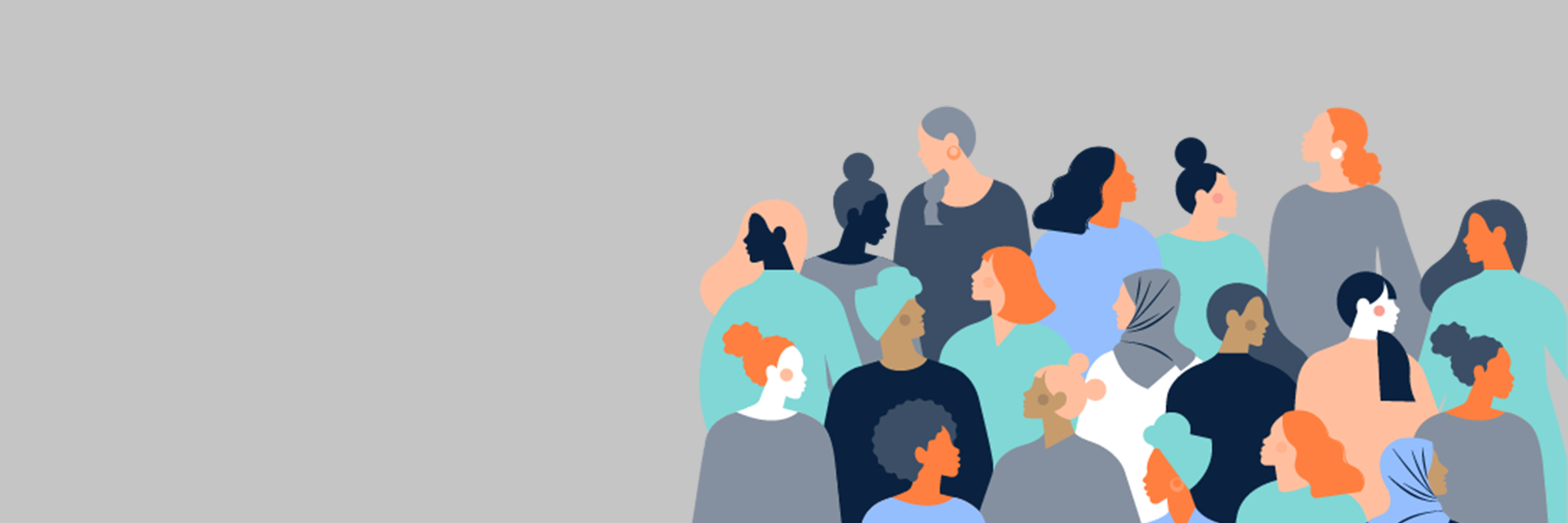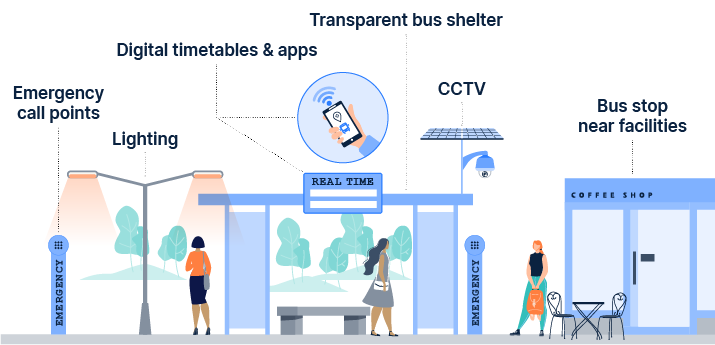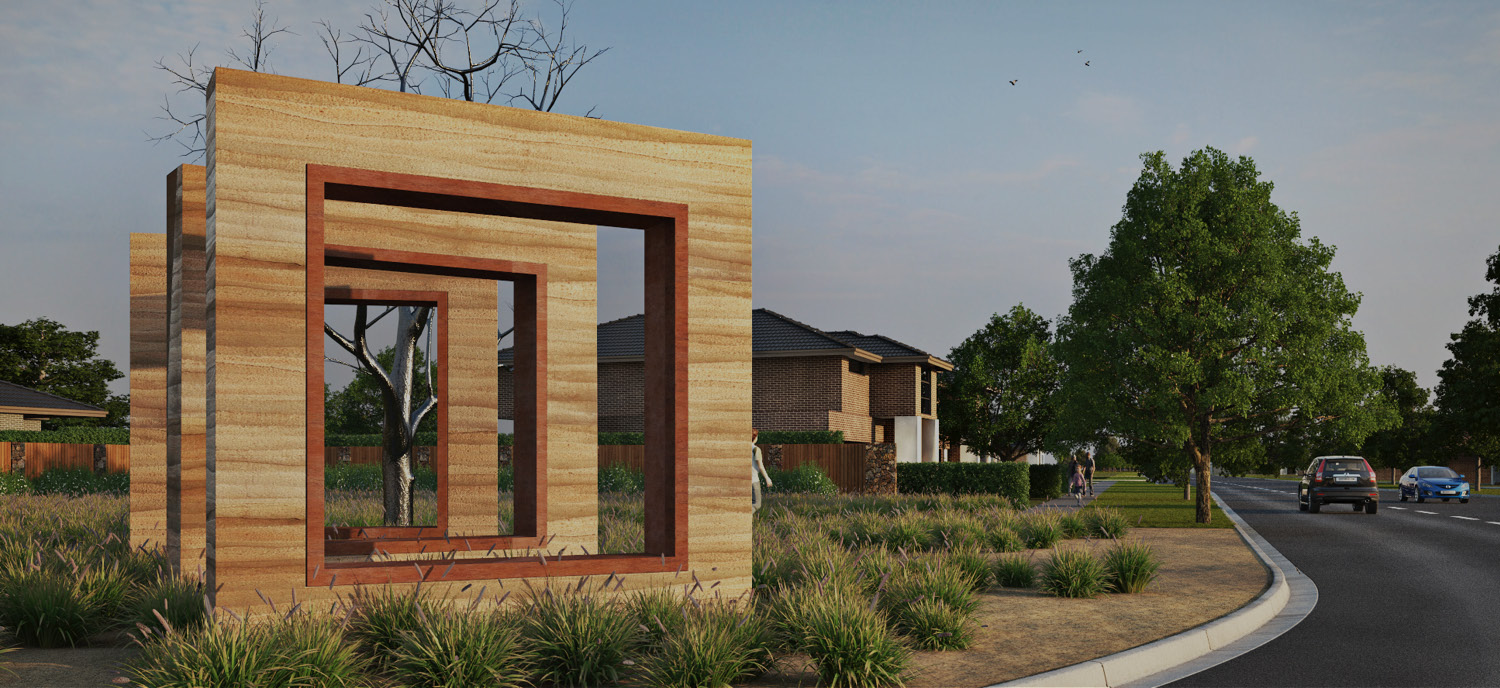
In the design process we combine our prior knowledge, understanding of our client’s scope and budget and industry experience. Our projects create benefits to our community and society through the essential services we provide, spanning from critical infrastructure, urban spaces and clean energy. As a bespoke service, engineering and planning provide a space for creative innovations and lateral thinking. It’s also an opportunity to bring ourselves to the design process. In addition to our technical skills, we also bring our human side to the process. While that is in majority a positive thing, our preferences and unconscious biases may inadvertently lessen the positive impact we can make.
It is tempting to assume that being science based disciplines, engineering and planning are immune from the very human blind spot of unconscious bias. However, they are not. The solutions provided historically have not always been gender neutral and, as it turns out, infrastructure and urban designs can and do impact female users differently. We now have a chance to identify the forms of unconscious biases that are hidden in plain sight and create deliberate and conscious choices to transform their impact.
What does unconscious bias in design look like?
In her insightful book Invisible Women: Exposing Data Bias in a World Designed for Men, Caroline Criado-Perez (2019) gives a series of case studies to demonstrate how a lack of gender segregated data can inadvertently result in a world which is less suited, less safe and less equitable for the female population.
The examples Criado-Perez brings to light are numerous, including highlighting when the medical industry is researching the suitability of pharmaceutical products, it has been common practice to exclude females (both human and animals) from trials to remove the influence that hormonal variability may have on the results. While this may generate data which is ‘cleaner’ and easier to analyse, it does mean dosage recommendations are based on a body more representative of the male form. In Australia, cardiovascular disease has been declining since the 70’s – for men. However, coronary heart disease deaths for women are not declining, attributable in part at least due to fact that females do not present ‘classic’ heart attack symptoms documented in medical texts. The Australian Institute of Health and Welfare issued an article in 2019 acknowledging an ‘increased recognition’ of the gender differences in how cardiovascular disease presents for women. However, it remains a gap in general knowledge. Invariably this means that both patient and practitioner are less likely to recognise the need for intervention early. Another example is the safety of cars which is tested with a crash-test dummy modelled for an average built man. These are just a few examples.
Our world of engineering and planning is not immune from this lack of gender segregated data and design bias. Let’s consider the following:
Case study 1: How men and women experience safety in public spaces differently
Statistics have shown women are not only more likely to be harassed in public, they are also likely to have a higher level of sensitivity to perceived threats. It’s therefore natural for female demographics to avoid areas that are less safe than others or those that appear to be less safe than others – even if Crime Prevention Through Environmental Design (CPTED) compliant. This in turn can impact access and use of public spaces and services.
Harassment of female commuters occurs at all stages of her journey worldwide, however it’s the wait at the bus stop that is particularly daunting. Waiting at a bus stop, particularly at night, is a prospect daunting enough to discourage or prevent public transport use. Safety measures such as CCTV and emergency call points are often available on the bus itself, however they are not routinely placed at the bus stop where a traveller is (or perceives she is) at most risk. Even if CCTV is available at the bus stop, the female traveller is unlikely to feel materially safer.
An invention that has been useful is the installation of digital timetables that notify a commuter on how long they can expect to wait for the service. Or perhaps even better, is where providers of public transport track their buses on an app, much like ride sharing apps do, so that a commuter can see when their service is going to arrive in real time. Equipping our communities with information so that they can commute safely and avoid lengthy waits are initiatives that are available and can be rolled out now.
In addition to simple CPTED driven design, safety measures such as lighting, transparent bus shelters to allow passive surveillance, locating bus stops near facilities such as restaurants that will be busy for longer periods of time, also helps. Of course, the real answer is for public spaces to be safe for all who wish to use them. Until this aim is achieved, engineers, designers and planners all have the opportunity and a role in creating a space that is inclusive of all genders.

The effect of feeling safe in public spaces isn’t limited to freeing choices around transport types. You would be forgiven for believing access to parks and public recreational spaces is a gender-neutral topic, however design choices can influence uptake here as well. And it matters. Research has shown that exercise habits of girls can have a material impact on their risk of osteoporosis later in life. Bone mass developed in childhood and adolescence are early indicators on minimising fragility fractures, and this requires physical activity (Ebleing et al, 2013). Barriers to the use of outdoor play and exercise areas can therefore have longer life impacts. In addition to personal health impacts, Ebleing et al highlights the associated economic impact, with fragility fractures having an annual impact of $7.5 billion (direct and indirect costs) to the Australian economy in the 2000-2001 financial year.
Creating spaces that are safe for all genders to exercise requires careful consideration. Criado-Perez notes that barriers to the use of outdoor exercise areas were alleviated where park areas had multiple smaller areas. Other design measures that were found to be useful included ensuring the exercise area was not fenced, allowing multiple entry and exit points.
Case study 2: How physical differences between men and women mean that products designed with a male reference in mind, are not inclusive
Let’s consider the physical differences of men and women. In the design of safety equipment and Personal Protective Equipment (PPE), it was common practice to assume that women are literally, small men. The size small in men’s sizing has been the go-to for women in male dominated industries, ranging from our own engineering sector to the defence forces. Ill-fitting PPE such as safety boots, gloves and High-Vis shirts at best are uncomfortable and can compromise the efficacy of the safety product. While working within the engineering business doesn’t routinely include the risks faced by those in the defence forces, poorly fitting PPE can similarly be hazardous.
It can be argued that the lack of supply of gender specific PPE is market driven, with less women in industry not providing an economic incentive for suppliers and therefore employers not stocking gender specific PPE. It is however equally likely that retention of women in the engineering industry is somewhat compromised when they are presented with, yet another sign, that the industry does not have them in mind as they reach for their oversized, ill-fitting PPE. The workwear market is improving in this regard. By example, an increasing number of brands of steel capped boots have gender specific options. Giving female team members the option to access what is available in the market is a step in the right direction, both in terms of a better, safer fit and also as an indication that our industry does actually have women in mind.

Case study 3: Female carers are more likely to be walking encumbered by a pram
Criado-Perez uses snow clearing programming as the example of how something as simple as maintenance can produce a gender skewed outcome. With female parents and carers statistically more likely to be walking with a pram, studies found that by switching the usual practice of clearing snow and ice from roads and motorways first, to footpaths and pedestrian areas, there was a decrease in mothers and carers being admitted to hospitals thanks to the reduced incidents of slips and falls on icy surfaces.
While hazards associated with the cold are less relevant in Australia than other countries, the principle still applies. In Australia, sun exposure and heat are likely to be the climatic hazard to be considered in design or maintenance programming. While shade structures are considered in a general sense, it would be an interesting challenge to present to projects whether the needs of a pedestrian with a pram is a filter that is commonly passed over designs.
Shared paths linking active transport routes consider the needs of cyclists, with surface design, rest stop spacing, rest stop design and route selection being driven by this mode of transport. It is less common to have design decisions around shared paths being driven from the perspective of a pedestrian with a pram. Or for the design to be informed by data identifying where the priority areas may be (e.g. linking residential areas to care facilities that are local). And this is where we see the impact of unconscious bias, where those designing these assets are subject to unintentional blind spots. Both relevant data and different perspectives can guide better design.

How does it come about and what can we do?
How do these biases inadvertently make their way into decision making and work outputs? The answer is that the individuals involved are unlikely to be deliberately choosing to create a product more suited to male skewed data. However male engineers are likely to be producing a product to be suited for their own use and be modelled by their own experiences. Because this is very human. In the design process it is natural to visualise how the output may be used, generally using ourselves as the model. While great design benefits from this human touch, it is also important for us to remember that as individuals, we are not representative of the whole community. In fact, the way we are able to or would prefer to use the output we are designing, may be very different to how a significant different portion of the community may use it.
Unconscious bias is a well-documented phenomenon in human centred disciplines. In recruitment settings, it’s now common practice to ensure an interview panel represents diversity. In male dominated industries in particular, effort is taken to ensure females are represented in the interview panel and assessment of potential candidates. However, in engineering design spheres there are not the same prompts to consider how suited the outcome may be for diverse users.
Engineers Australia reports that female participation in the industry sits at 13% in 2022. It stands to reason that unless there is a deliberate and conscious effort to counter the tendency to design for our own individual use, it’s unlikely that the end product will be equally suited to women and other social minorities. Without deliberate prompts and guidance to counter this tendency, male dominated industries such as engineering are, as Caroline Criado-Perez has demonstrated, inadvertently more likely to produce scopes, standards and engineering designs more suited to a male skewed audience.
Unfortunately, we can’t rely on our usual quality control processes to guide our designs to be more universally suitable. A lack of gender segregated data impacts scopes and project briefs which in turn, impacts the design process. In this sense, the market is not self-correcting. Public spaces, infrastructure and services may be designed to be less equitable and less available to some parts of the community while still meeting scope, specifications and current industry standards. Quality control processes focus on accuracy, meeting standards and scope requirements. Without specific requirements and prompts to guide a review of the design with gender equity in mind, our existing processes are unlikely to assist. A lack of gender segregated data further entrenches biases through a lack of information required to correct them.
Just as recruitment processes have benefited from conscious countermeasures to balance unconscious bias, our design processes and outputs could similarly be improved. If our industry is to apply the same unconscious bias countermeasures in design as we have in recruitment, we’ll need to consider the same evolution of:

Being in an industry that is solution focused, there are a couple of key areas we can tackle to improve the design environment. Raising awareness, including relevant conversations in the workplace, industry forums and advocacy bodies is a first step. Because nobody is deliberately designing a product which is less suited to, less safe for or less equitable for the female-identifying population, it’s all the more difficult to identify. Supporting those of us responsible for creating products and services that are used by the general community with design prompts and checklists can also assist in focusing attention on the right areas. Including a female engineer or planner in the design review process can also assist.
Last, is to ensure our design process is properly informed. Collecting gender-segregated data is arguably one of the most important steps and one we should be encouraging all entities responsible for public spaces and services to collect, analyse and make available to industry. By understanding how different genders use a service, asset or open space, it is more likely it will be designed to accommodate everyone’s needs.
Related
insights
 Women are not small men – engineering designs for the other half of the population
Women are not small men – engineering designs for the other half of the population
In honour of International Women's Day, we explore the theme of #EmbraceEquity by examining unconscious gender bias present in everyday designs. SMEC Technical Principal for Environment, Jo Davis, discusses the importance of ensuring our engineering designs reflect the needs of all.
 Women in Urban Design lead the way
Women in Urban Design lead the way
I am pleased to report that I have just been selected for the UDIA Women in Property Committee for the 2018-2020 season.
 IWD2022: Women at SMEC shine bright
IWD2022: Women at SMEC shine bright
Seven inspiring and influential women who work at SMEC, Logashri Sewnarian, Libby Paholski, Pawitasari Fransisca, Florence Wambugu, Raveena Grover (pictured), Karina Discaya and Saima Bodla, champion International Women’s Day 2022.
 What advice would you give your younger self? SMEC’s women in engineering reflect on their career journeys
What advice would you give your younger self? SMEC’s women in engineering reflect on their career journeys
Reflecting on Women’s Month in South Africa, SMEC South Africa celebrates their very own women in engineering - inspiring females who are not only transforming our built environment but leading the way for the next generation of female engineers.




